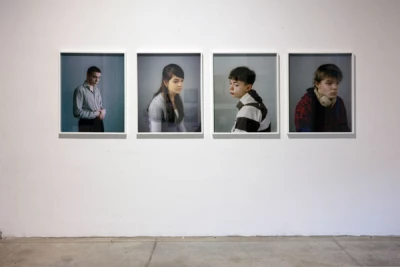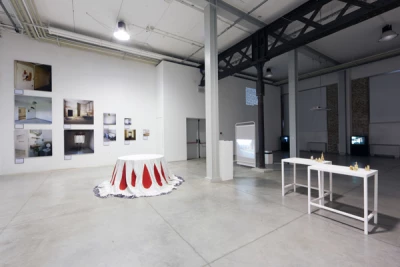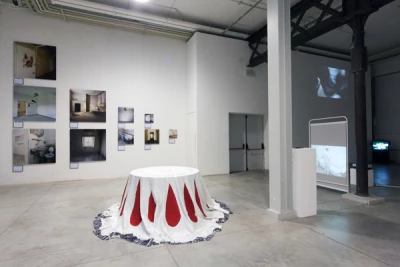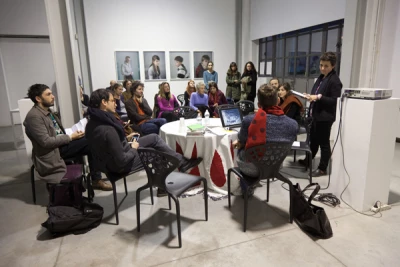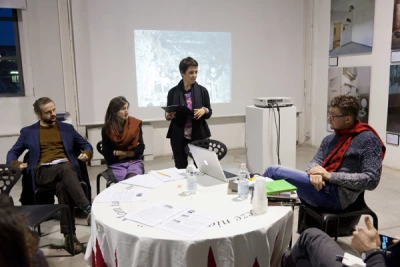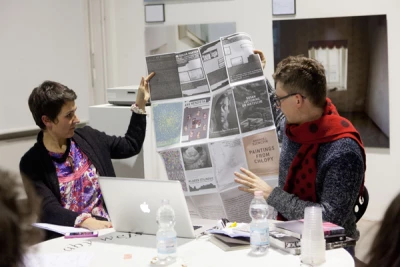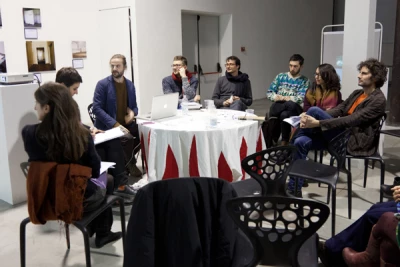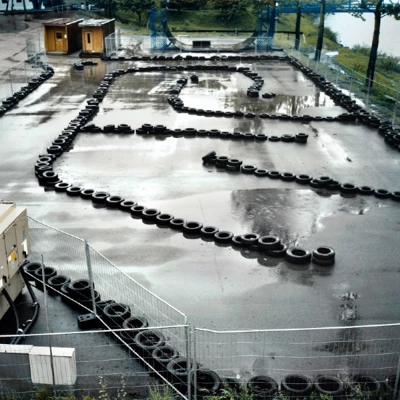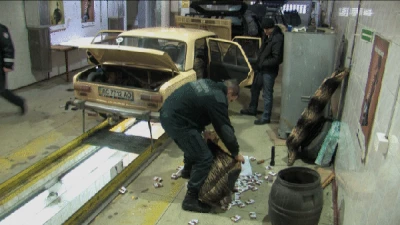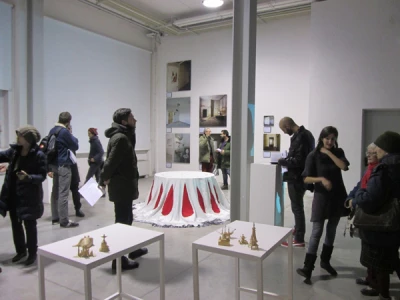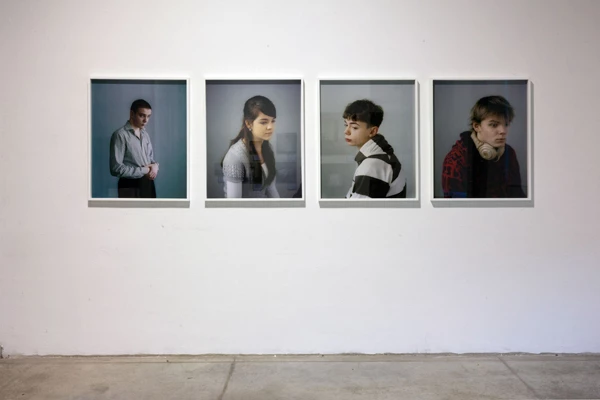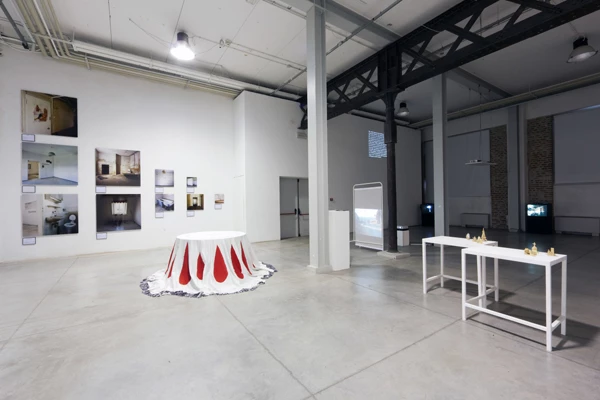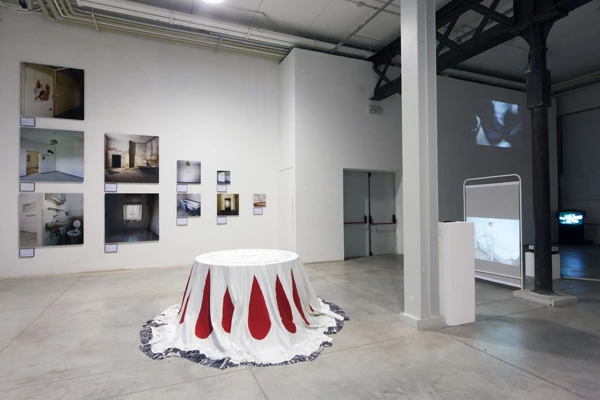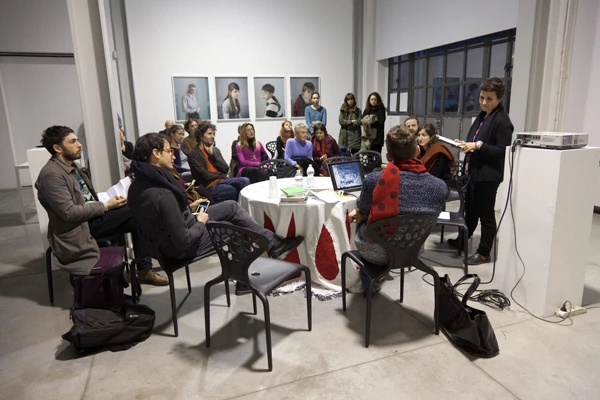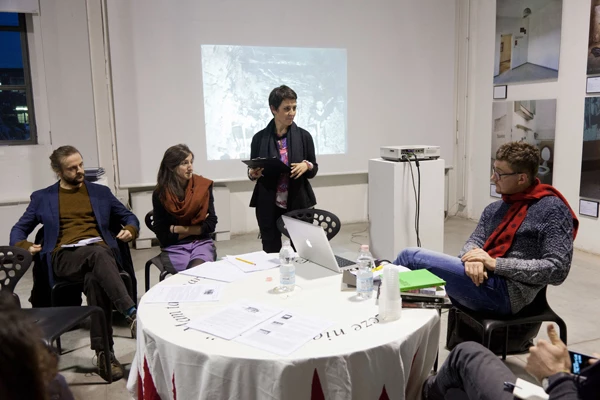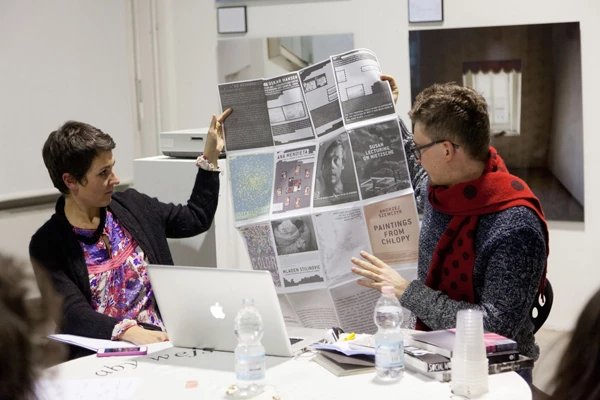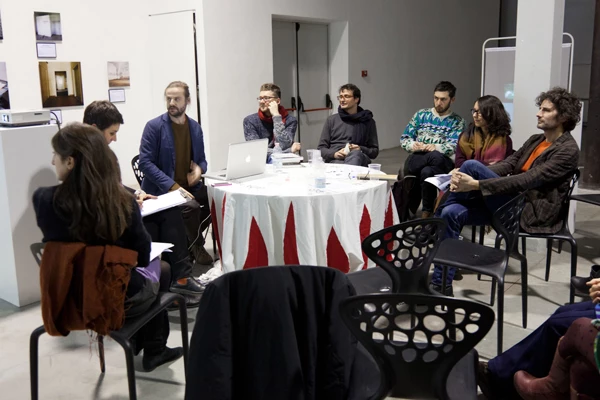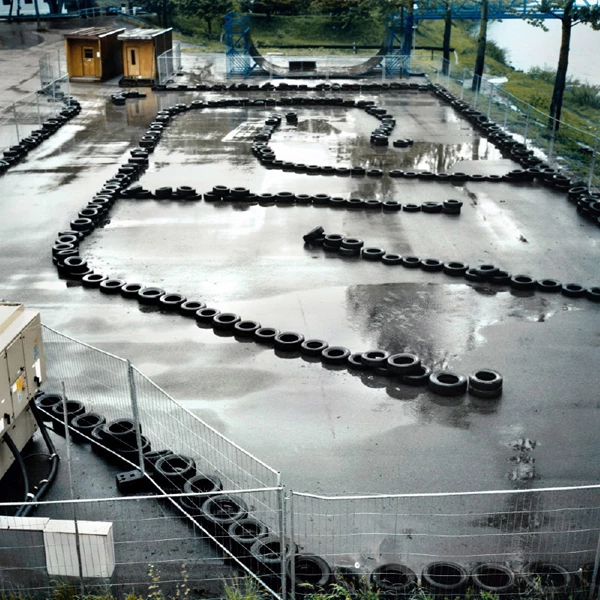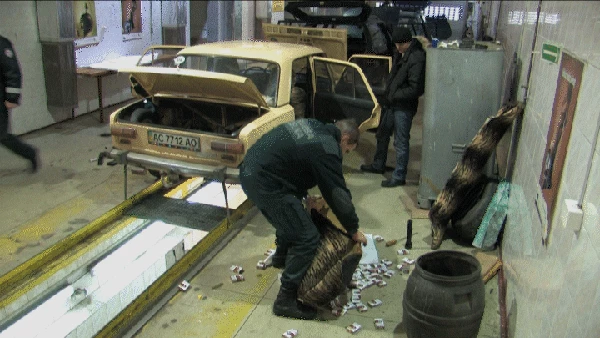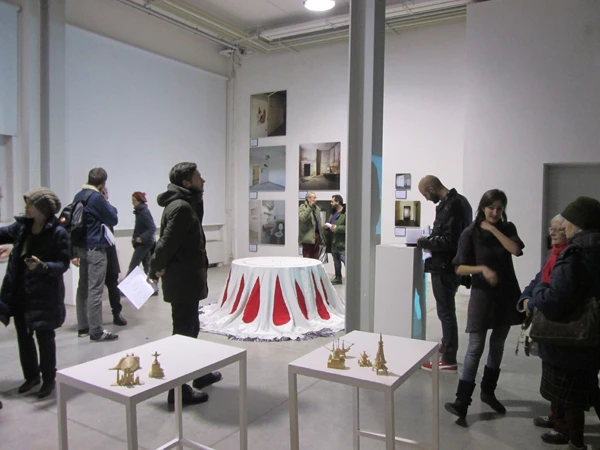The Wall • Art Face to Face with Borders
CURATED BY
Stanislaw Ruksza
IN COLLABORATION WITH
Fondazione Imago Mundi e CCA Kronika in Bytom
WORKS BY
Pawel Althamer, Wojciech Doroszuk, Magda Fabianczyk, Giuseppe Fanizza, Nina Fiocco, Khaled Jarrar, Giovanni Morbin, Marina Naprushkina, Joanna Rajkowska, REP, Santiago Sierra, Stephanie Syjuco, Grzegorz Sztwiertnia, Lukasz Trzcinski, Krzysztof Wodiczko, Piotr Wysocki
From 13.01.2015 to 18.02.2015
4.02.2015 h 17.30 - Talk with curator Stanislaw Ruksza and artist Lukasz Trzcinski
The wall: Art Face to Face with Borders is a traveling project curated by Stanislaw Ruksza, conceived as an investigation around the theme of borders in visual arts from political, sociological, economic, and historical perspectives, through the work of Polish and international artists.
Some stagger and fall, after all it's not easy banging your heart against some mad buggers (Pink Floyd, Outside the Wall)
Developed in collaboration with Careof and born from the Polish institutions Fondazione Imago Mundi and Kronika in Bytom, The Wall primarily refers to the Berlin Wall, today an ‘Ost-algic’ tourist souvenir, but for decades during the Cold War a construct of the foreign policy of countries on both sides of the Iron Curtain to delimit the ‘us’ from the ‘them’, the ally from the enemy, freedom from slavery. Starting from this initial suggestion, the project reflects – through video works, photography, and installations – on the creation of lines of demarcation. Although geographic borders have become more fluid, new frontiers continue to arise related to cultural or religious heritage, often based on permanent conflict, as Samuel Huntington reminds us in his Clash of Civilizations. Some arise from fear of a new ‘Other’, as a legacy of colonialism, evident in the outcries of populist xenophobia or anti-immigration laws. Others stem from the technocratic political framework of the Schengen agreement. Recent events in Ukraine or the construction of the wall between Israel and the occupied Palestinian territories are just two of the possible examples. More broadly, the wall becomes a metaphor for resistance, understood as a dominating presence that generates fear but, at the same time, is a precondition for creation.
The Italian edition of the project, realized in collaboration with Careof and preceded by a research period by curator StanisLaw Ruksza within the FDV Residency Program (December 2014), allows a dialogue between the selection of international artists and the work of Giuseppe Fanizza, Nina Fiocco, and Giovanni Morbin.
Within The Wall and based on the project’s contents, on Wednesday, February 4, Careof presents Where I was not, a discussion table on strategies for redefining border imaginaries. During the meeting, the exhibition curator Stanislaw Ruksza and artist Lukasz Trzcinski delve into the key themes of the project and engage with the public gathered around the work by Magda Fabianczyk, conceived as a working table between the Romani community of Bobrek in Poland and representatives of the local government. From this initial suggestion, the meeting then intends to revisit some of the themes prompted by the exhibited works, focusing on criticalities, potential, and strategies of artistic practice in interventions united by an interest in redefining border imaginaries, in the broadest sense: territorial, cultural, socio-political. Stanislaw Ruksza thus presents his curatorial approach through the narration of some projects and the investigative methodology mainly implemented in the artistic direction of the Kronika Contemporary Art Center in Bytom, Poland. Here he pursues a program of activities dedicated to exploring interconnections between contemporary art theory, activism, music, politics, social sciences, education, cinema, theater, alternative tourism, design, and architecture.
Following this, Lukasz Trzcinski introduces the photographic series New Europe, started in 1999 with the aim of capturing the signs of political, economic, and cultural transformations in a ‘New Europe’ characterized by a stereotyped imagination and perception. In dialogue with the two Polish guests, Careof presents an initial series of Italian experiences marked by the same interest in redefining imaginaries through long-term artistic strategies, including Dencity, presented by project coordinator and anthropologist Erika Lazzarino and curator Silvia Simoncelli, Foresta Bianca by curator Matteo Balduzzi, and the works of artists Leone Contini and Giuseppe Fanizza.
These experiences will culminate in the publication and the next exhibition stage of The Wall, thus enhancing the dialogue between the two institutions – Kronika and Careof – which began in 2013 and has been marked by exchanges of artist residencies, screenings, and exhibitions.
The exhibition, accompanied by a publication with critical texts and documentation of the works, is realized with the support of the Polish Ministry of Culture and National Heritage and the Consulate General of the Republic of Poland in Milan.
The Wall is an integral part of Ja lubje Polske, a multi-year project curated by Careof that investigates through exhibitions, workshops, and residencies for artists and curators the protagonists of the Polish art scene.
Download the curator’s notes by Stanislaw Ruksza popup: yes
With the support of the Polish Ministry of Culture and National Heritage, Consulate General of the Republic of Poland in Milan, Instytut Adama Mickiewicza and under the patronage of the Municipality of Milan.
Thanks to Giuseppe Altare
ARTISTS BIO
Stanislaw Ruksza, (1979), graduated in Art History at the Jagiellonian University of Krakow, directs the Kronika Center
for Contemporary Art in Bytom focusing on projects that combine visual art and other disciplines, social sciences and
activism. He has taught at the School of Art of the University of Silesia in Katowice. Since 2007 he is a member of the
Krytyka Polityczna (Political Criticism), the most important network of institutions and activists in Eastern Europe. He is
the author of numerous articles on contemporary art.
Selection of exhibitions:
2012: Piotr Wysocki. Transeuro 2012, ArtBoom Festival, Krakow; Social work, Kronika, Bytom. 2011: Collier Schorr.
German faces, Kronika, Bytom; Viennese actionism. The opposite pole of society, MOCAK, Krakow. 2010: Kunstkammera Bytom - the walk as an exhibition, Kronika, Bytom; Catholic in Kronika, Kronika, Bytom. 2008: Jerzy Lewczynski and Mikolaj Dlugosz. Archeologies, Kronika, Bytom; The Kronika alphabet in Berlin, different places, Berlin. 2007: Umpolen, Freiraum, Museum Quartier, Vienna. 2006: month of photography by Jerzy Lewczynski, BWA, Katowice. 2003: Katowice Art Underground after 1953, BWA, Katowice.
Selection of texts and catalogs: 2012: social works, Kronika, Bytom. 2011: recover the city, KBF, Krakow; Viennese
actionism. The Opposite Pole of Society, MOCAK, Krakow. 2010: Artur Zmijewski. Trembling bodies, Kronika - DAAD,
Bytom - Berlin. 2003: Katowice Art Underground after 1953, BWA, Katowice.
The Imago Mundi Foundation was inaugurated in 2005 by a group of documentary photographers and cultural operators.
The Foundation has created a platform for collaboration between artists, cultural centers devoted to contemporary art, and institutions of public administration. It has organized awards for research projects for the research of visual art and
related research fields, and participated in international contemporary art events.
www.imagomundi.pl
Kronika is a center for contemporary art founded in 1991 in the industrial city of Bytom, in the upper part of the Silesia
region. The center is dedicated to the exploration of the interconnections between contemporary art theory, activism,
music, politics, social sciences, education, cinema, theater, alternative tourism, design and architecture . Kronika is a place for the production of knowledge. In 2006, after a period of renewal, Kronika began a new phase of its activity, increasing exhibitions, public space projects, trips, experimental music concerts, art publications, workshops, discussions and the dissemination of art .
www.kronika.org.pl
RESIDENCY
Stanislaw Ruksza
30.11 > 10.12.2014
in collaboration with: Fondazione imago mundi e CCa Kronika in Bytom
The director of the Contemporary Art Center KRONIKA in Bytom, Stanislaw Ruksza has been a guest of the FDV residency in order to meet italian young artists.
At the same time he visited Careof exibition spaces to organize the The Wall exhibition.
Art Face to Face with Borders investigates the borders theme in visual arts by a political, sociological, economic and historical point of view. Among the artists in the exhibition: Giuseppe Fanizza, Nina Fiocco and Giovanni Morbin, who met during the residence.
Stanislaw Ruksza, Lukasz Trzcinski, Leone Contini
10.01 > 14.01.2015 03.02 > 09.02.2015
In collaboration with: Kronika e Fondazione imago mundi
The guests parecipated in the opening and the talk organized by Careof in the context of the The Wall exhibition.
Art Face to Face the borders, Where I Was Not is a comparison table about the possible strategies of redefinition of border imagery, starting from the contents of the The Wall project, that shows the works of 17 international and polish artists.
In dialogue with polish guests, some italian experiences will be presented: the work of artists Leone Contini, Giuseppe Fannizza and the projects Dencity and Foresta Bianca
